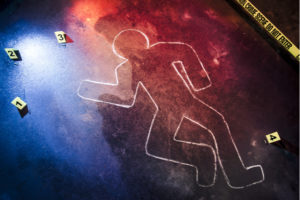In cities run by politicians who have sided against police, shootings are spiking, crime is rampant, and chaos has ensued. Chris Enloe reports for The Blaze, that shootings have surged in New York since the NYPD was forced to disband its “anti-crime units.” He writes:
The move was applauded by those who seek immediate police reform in the wake of the tragic killing of George Floyd.
“This is a seismic shift in the culture of how the NYPD polices this great city. It will be felt immediately in the communities that we protect,” New York Police Commissioner Dermot F. Shea said.
Unfortunately for New Yorkers, the impact of the reform was immediate — but it was not positive.
According to the New York Post, shootings in the city surged after the NYPD disbanded the plainclothes units. In fact, between Monday, the day Shea made his announcement, and Saturday, there had been 28 shooting incidents with 38 victims. The shootings accumulated at least five deaths.
By comparison, there had only been 12 shootings over the entire week during the same time period last year, the Post noted.
Meanwhile in Minneapolis, reports Paul Sacca, where the city council voted to “disband” the police, 11 people were shot on Sunday morning alone.
There were multiple shooters, according to the Minneapolis Police Department. The shooting suspects all fled the murder scene.
“Police arrived and located several people suffering from gunshot wounds,” the Minneapolis Police Department said in a press release. “Multiple ambulances responded and transported victims to Hennepin County Medical Center. Others were transported to area hospitals in private vehicles.”
One adult male died at the hospital, and the other 11 are receiving medical treatment for their non-life-threatening injuries.
The MPD is investigating the shooting, and have not released a motive for the attack. No suspects are in custody.
This shooting spree comes only days after another mass shooting event. On Tuesday, nine people were shot in Minneapolis, including eight in a two-hour span.
As of June 17, a record 149 people have been shot in Minneapolis since the beginning of the year; nearly half of the victims were shot in the three weeks leading up to June 17, according to the Minneapolis Police Department. The first week after George Floyd’s death, there were a record 22 gunshot victims.
In Seattle, where Mayor Jenny Durkan ceded control of a portion of the city to radical Marxists, calling their occupation a “summer of love,” there were also shootings over the weekend. In the six-block “Capitol Hill Occupied Protest” zone the protesters created as a haven against imagined “police brutality,” two people were shot early Saturday morning. When police attempted to help the victims, the occupying protesters prevented their access. The Guardian reports:
According to a police blog, officers responding to the shooting said they “were met by a violent crowd that prevented officers safe access to the victims”.
Video released by police appeared to show officers arriving at the protest zone saying they wanted to get to the victim and entering as people yelled that the victim was already gone. Police mostly retreated from the zone after clashes with protesters, KIRO-TV reported.
Private vehicles took two males with gunshot wounds to Harborview Medical Center, where the 19-year-old died and the other was in critical condition in intensive care.
The King county medical examiner’s office had yet to release the identity of the dead man. Seattle city council member Kshama Sawant said he was black.
The suspect or suspects fled the scene. Police asked the public for information. An investigation was “active and ongoing”, detective Mark Jamieson said on Sunday.
Mike Solan, president of a police union representing more than 1,000 Seattle officers, told KIRO he feared for the safety of law enforcement and the community at large.
“The community is at grave risk and the men and the women that provide that public safety service, they’re at grave risk as well,” Solan said.
This is just a taste of what awaits Americans in cities where politicians “disband,” “defund,” or otherwise neuter their police departments. It’s a good time to get your gun and your training now and to escape the city.
E.J. Smith - Your Survival Guy
Latest posts by E.J. Smith - Your Survival Guy (see all)
- Rule #1: Don’t Lose Money - April 26, 2024
- How Investing in AI Speaks Volumes about You - April 26, 2024
- Microsoft Earnings Jump on AI - April 26, 2024
- Your Survival Guy Breaks Down Boxes, Do You? - April 25, 2024
- Oracle’s Vision for the Future—Larry Ellison Keynote - April 25, 2024
















